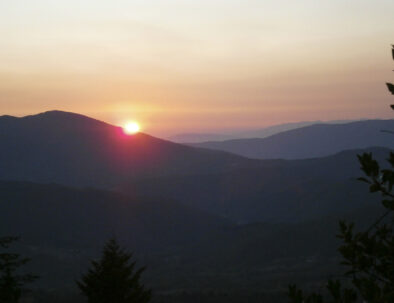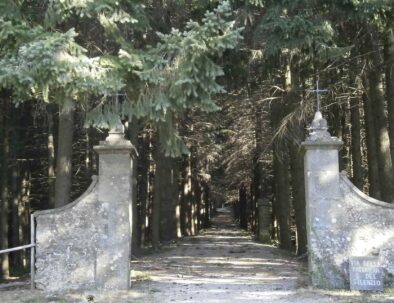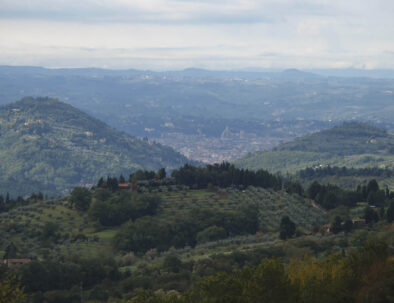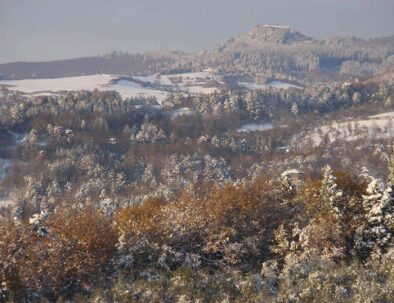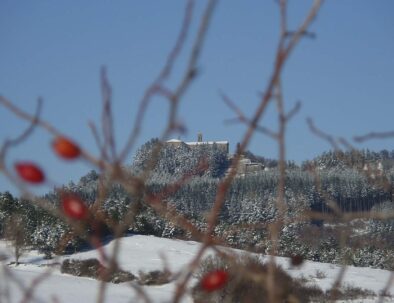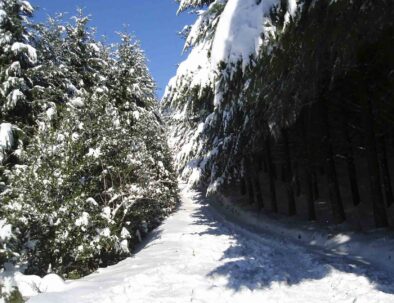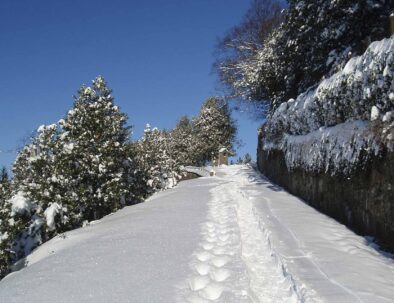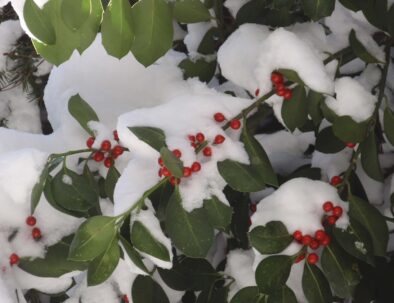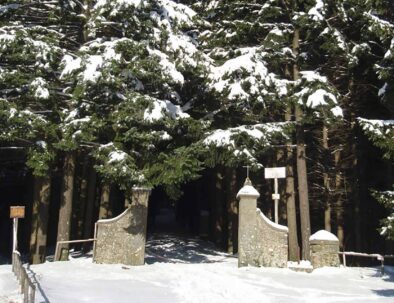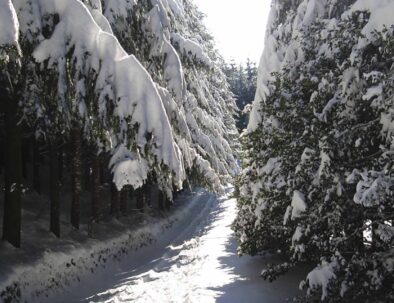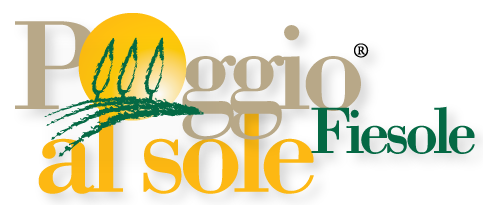Monte Senario
Itinerary 2
"On the foothills of the Apennines, on top of God’s mountain" Poggio al Sole - Montesenario - Poggio al Sole
This is a return trail. The first segment mostly climbs to reach the top of Montesenario and its ancient convent, which silently watches over the valley and the fantastic view of Mugello, a large part of the Tuscan Apennines and the countryside of Fiesole and Florence. The building stands out from the surrounding countryside on top of the mountain, all around a dense forest of conifers. The landscape is mystic and charming, and few visitors can resist from ascending the top. It’s a long way, but the effort will surely pay off.
Distance: 14 km – 8,69 miles (return trip)
Elevation grade: 532 m (446 m one way).
Difficulty: average (to go)-easy (way back).
Estimated time: 4-5 hours (return trip). Allow at least another 30 minutes to visit the monastery.
Suggested time of the year: all year round (there may be muddy segments during rainy days. In every season consider a lower temperature (at least 3°C) in Montesenario than that at the Agriturismo Poggio Al Sole, and the possibility of strong, cold winds, particularly in winter.)
Interest: landscape-history.
Webpages to know more:
http://www.montesenario.net
http://www.regione.toscana.it/regione/export/RT/sitoRT/Contenuti/link/banchedatinascoste/visualizza_asset.html_659502543.html
http://www.servidimaria.org
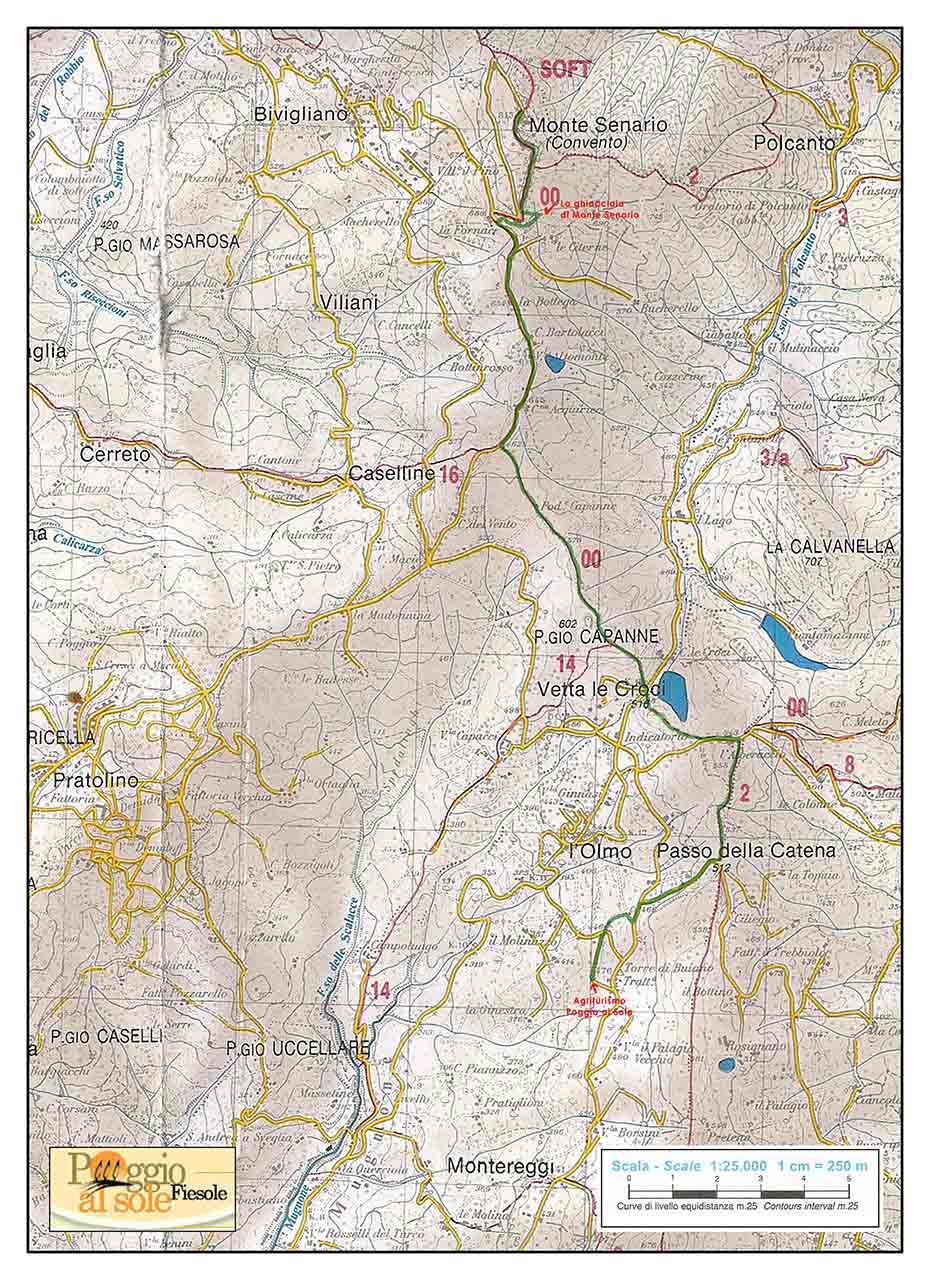
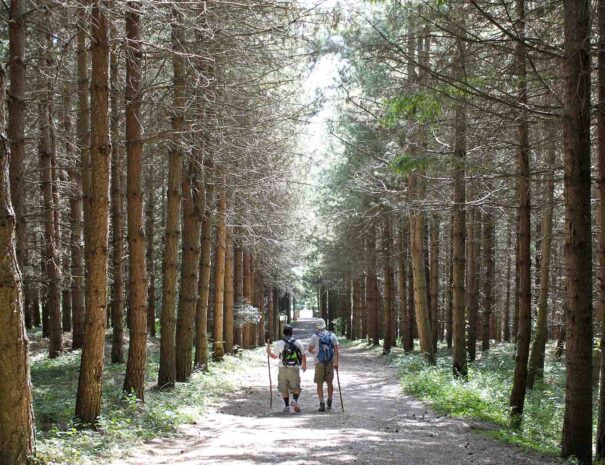
The first segment of the footpath is similar to Itinerary 1, which you find below.
Leave the entrance of the farmhouse Poggio al Sole on your right and proceed for about 500 m along via Torre di Buiano, an ancient place-name presumably of Longobard origin, already referred to as corticella di Bujana in some documents dating from 890. Ignore the two streets crossing it – one on your left descending and the other climbing on the right- and drive along the hay barn with annexed farm house, Podere l’Acquinvoglino, until you cross Via dell’Acquinvoglino, then turn right in opposite direction to the houses. It is said that the name of this ancient road comes from the Latin word acqua bulliens (gurgling water)due to the presence of numerous springs (the majority of which are now dried up)known since the Roman age and used to supply the aqueduct of Fiesole and the XVI century-aqueduct of Florence, which can be still seen at the bottom of the valley.
Once you get to Via dei Bosconi (S.P.54), turn left and then take via Catena, which is immediately on the opposite site, toward Monteloro. After 500 m you will get to Passo della Catena (515 m.). Take trail n. 2 on the left, which is marked with a white and red stripe, toward Alberaccio.
From here, the footpath leaves Itinerary 1 and crosses with the The Renaissance ring (name of the trail A. R.), a 170 km (105,57 miles) walk which winds through the hills surrounding Florence, which centre is ideally represented by the Brunelleschi Dome.
On your right you can see from a distance the Sanctuary Madonna del Sasso, immersed in a thick wood of chestnut-trees, in the heart of the Protected Natural Area of “Poggio Ripaghera”. In this segment, the trail borders the northern part of Fiesole municipality, which roughly corresponds to the limit of the typical Fiesole landscape, marked by the cultivation of olive groves.
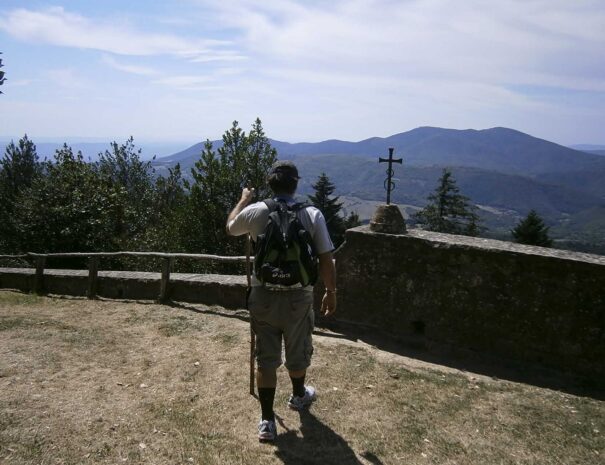
We leave the olive trees behind and proceed for 500 m until the little village of Alberaccio, where a graveyard stands to commemorate the murder of a partisan; then onward across the province road and along the ridge of Olmo. Here we take trail n. 00 (marked in red and white) going to Montesenario.
The landscape here is typically pre-Apennine, with a magnificent view over the entire valley of ravine Mugnone, a real natural amphitheatre closed on one side by the hills of Montereggi and Poggio Pratone, and on the other side by Montemorello and the hills of
Pian di San Bartolo, Basciano and Pratolino. The valley is spread with rural houses, fields divided geometrically and cultivations, where vineyards and olive groves alternate with woods. The presence of men and their work is immediately perceivable, but an ancient harmony with the environment seems to pervade the space, a multicolor mosaic made up of green, yellow and brown nuances, according to the season.
The mountains of Montececeri and Monterinaldi rise in the background, breaking this idyllic pattern and forming a canyon which offers protection to the city of Florence.
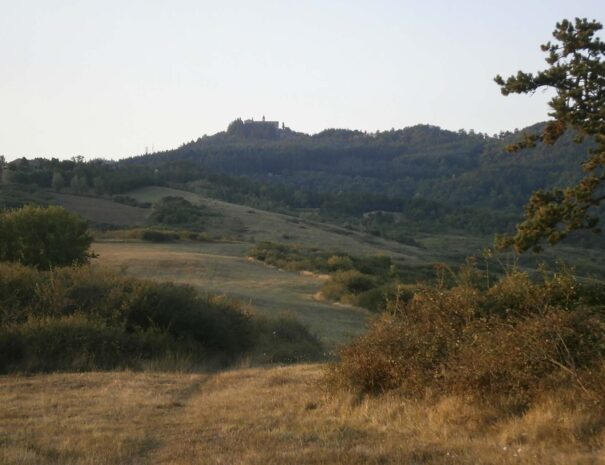
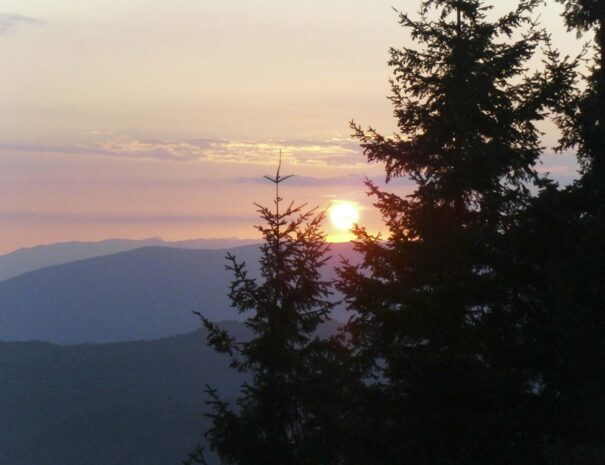
The Etruscan word “Eiser” or “Aiser” probably meant “gods”. Hence the word “Senario” and Montesenario, the mountain sacred to Etruscan Gods.
Now the essence and magic of this place is self-evident, as well as its profound spirituality, where ancient and modern, men, God and nature, and man with himself, seem to co-exist in the eternal flow of time.
Itinerary and photos by Giovanni Crescioli: www.FiesoleBike.it
